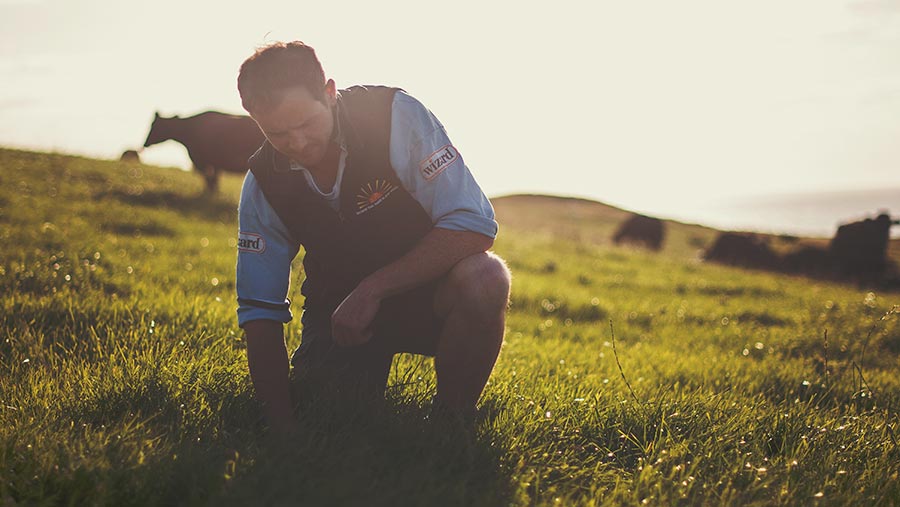Farmer Focus: Don’t let kit and sheds distract from grass
 © Lindsay Walker
© Lindsay Walker Another bank holiday wash-out brought some fantastic rain. Now we’re basking in 20C sun again and grass growth on the platform will be out of control.
It’s a reminder that in the UK and Ireland we have a huge comparative advantage over most of the world. Our ability to grown and use the cheapest form of feed available to us (grass) allows us to develop sustainable business models capable of surviving price volatility and political changes.
Furthermore, in its simplest form, using grazed grass can be achieved with the smallest amount of capital outlay, providing the foundation for young farmers and new entrants to establish their businesses and grow their equity in stock.
See also: How to set up rotational grazing on your beef farm
Why make it complex?
“Life is really simple, but we insist on making it complicated” rings too true in so many circumstances. Expensive machinery, sheds and show-winning cattle create an expensive smoke screen to mask what is growing – or not growing – in the grazing and silage fields surrounding us.
Even at fantastic events such as Welsh Grassland, how many potential young farmers gawked at £100,000-plus set-ups going up and down the field, yet walked right past the grass-breeding stands and trial plots?
I was guilty of all of the above before changing my approach to grass management. My point is that if all you see to starting up with your own stock ownership is barriers, or if Brexit, subsidies or potential cheap imports keep you awake at night, ask yourself if you are maximising the comparative advantage handed to us.
Pleased with submission rates
On the farm we are four weeks into AI, with about a week to go. We had a pleasing submission rate of 90% in the first three weeks and things have really quietened down now, which is promising.
Grass growth is good, with some surplus taken off the platform and first-cut silage finished on the support ground.
This month we say goodbye to Pete, who is returning to Ireland to take on the management of a 240-cow herd. I am very grateful for the hard work he has put into the farm for the last two seasons and wish him all the very best for the future.
